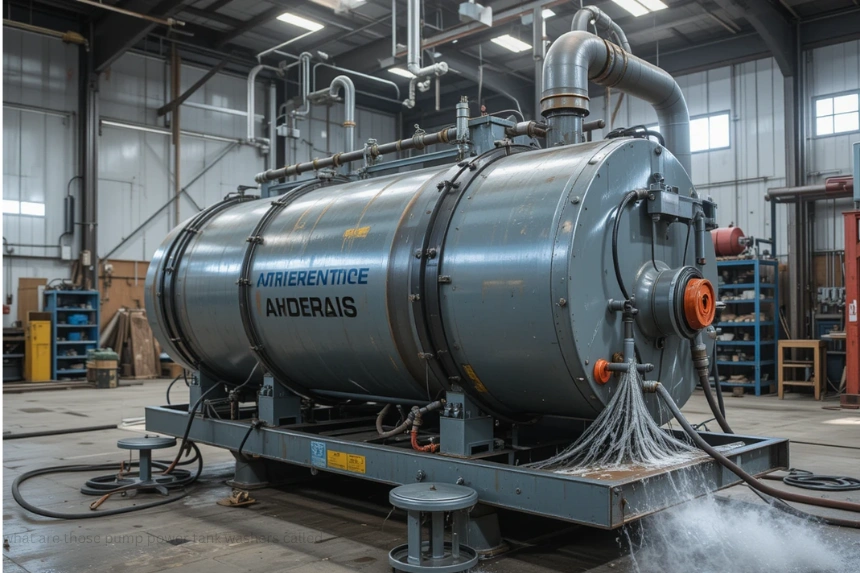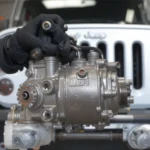If you’ve ever wondered about the specific tools used for cleaning or maintaining large tanks, pumps, or industrial equipment, you’re not alone. Many professionals and DIY enthusiasts ask, “What are those pump power tank washers called?” The answer lies in understanding their design, purpose, and common terminology within the cleaning and maintenance industry. This article aims to clarify exactly what these tools are, their various types, and their significance in efficient cleaning processes.
Introduction: The Need for Specialized Tank Washers
Industries ranging from agriculture and manufacturing to water treatment and food processing rely heavily on the cleanliness of tanks and large containers. Residues, sediments, or chemical buildup can compromise process integrity, contaminate products, or cause equipment failure. Traditional cleaning methods—manual scrubbing or using simple hoses—are often inadequate for large or intricately designed tanks.
This is where specialized equipment, often referred to as pump power tank washers, come into play. These devices are engineered to deliver high-pressure cleaning power, reach difficult areas, and complete thorough sanitation with minimal manual intervention.
What Are Those Pump Power Tank Washers Called?
The term “pump power tank washers” broadly describes a category of industrial cleaning tools designed specifically for cleaning tanks and similar large vessels. More precise names for these tools include:
1. Tank Cleaning Machines
A generic but accurate term, tank cleaning machines are motorized devices equipped with high-pressure spray nozzles that rotate or oscillate, ensuring comprehensive cleaning inside tanks.
2. Rotary Jet Heads
Also known as rotary spray heads or rotary jet nozzles, these are devices that spin or oscillate at high speeds to distribute cleaning jets evenly across tank surfaces.
3. Power Washers with Tank Cleaning Attachments
Complex systems that combine high-pressure power washers with specialized attachments designed for tank cleaning form a broad category often labeled accordingly.
4. Tank Cleaning Nozzles
This refers to the specific spray nozzles used within these systems, especially those designed to provide rotary or solid streams of water for cleaning.
5. Tank Washing Machines or Tank Cleaners
These terms are interchangeably used in the industry and often refer to complete units.
6. Horizontal or Vertical Tank Washheads
Depending on tank shape, specific washheads are designed for different orientations, often named based on their form factor.
In summary, these tools are commonly called tank cleaning machines or rotary jet heads, depending on the system’s design and application.
How Do These Pump Power Tank Washers Work?
Understanding how these washers function provides insight into why they are essential:
High-Pressure Cleaning: They operate using powerful pumps that generate water streams at high pressures, often exceeding 2,000 psi.
Rotary or Oscillating Nozzles: These nozzles rotate or oscillate during operation, distributing water jets in a 360-degree pattern to reach all interior surfaces.
Automated Movement: Many systems are mounted on remote-controlled or automated mechanisms that rotate or move throughout the tank, ensuring uniform coverage.
Chemical Compatibility: Some units can be integrated with chemical agents for cleaning or sanitizing.
Multiple Spray Patterns: Nozzles can be configured for various spray patterns and force levels, catering to specific cleaning requirements.
This combination of features allows for thorough cleaning, minimizing dead spots and reducing manual labor.
Types of Pump Power Tank Washers
Different applications demand different types of tank washers. Here are the common types:
1. Rotary Jet Head Cleaners
Designed for heavy-duty cleaning, these heads rotate at high speeds, delivering powerful jets that clean the entire tank wall surface.
2. Dynamic Cleaning Machines
These are mobile or stationary units that can be programmed or manually operated to rotate inside tanks, suitable for tanks of various sizes and shapes.
3. Fixed Spray Balls
While not rotary, fixed spray balls are sometimes included in this category, optimized for lighter cleaning tasks.
4. Multi-Function Tank Cleaning Machines
Some advanced systems combine multiple spray patterns and movement capabilities, suitable for complex or large tanks.
Applications of These Washers
The versatility of these tools makes them vital across numerous sectors:
Food and Beverage Industry: Sanitation of fermentation tanks, silos, and mixers.
Chemical Industry: Removal of chemical residues from storage vessels.
Oil and Gas: Cleaning storage tanks and separators.
Water Treatment: Maintenance of clarifiers and reservoirs.
Pharmaceutical Sector: Sterilization and sanitation of process tanks.
Using the right tank cleaner ensures compliance with hygiene standards and operational efficiency.
Key Features to Consider When Choosing Tank Washers
A few things to think about when choosing these tools or systems are:
Tank Size and Shape: Larger or more complex tanks require more robust or specialized equipment.
Material Compatibility: Nozzles and materials should resist corrosion and chemical attack.
Pressure and Flow Rate: Determines cleaning power.
Automation Features: for consistency in outcomes and ease of use.
Mobility: Whether the washer needs to be portable or fixed.
Safety Standards: Compliance with industry safety and health regulations.
Importance of Proper Maintenance
To ensure longevity and effectiveness, maintenance of these pump power tank washers is critical. Regular inspection of nozzles, seals, and pump components, along with proper cleaning after use, can prevent breakdowns and ensure reliable performance.
Conclusion
So, what are those pump power tank washers called? They are commonly known as tank cleaning machines, rotary jet heads, or tank washers. These specialized tools are indispensable for ensuring thorough and efficient cleaning of large tanks across various industries. Their design combines high-pressure water jets, rotation or oscillation, and automation to achieve comprehensive sanitation with minimal manual effort.
If your industry involves tank cleaning, understanding these tools’ names and functions helps you select the right equipment, plan maintenance, and optimize cleaning processes. Whether for food safety, chemical sanitization, or industrial maintenance, investing in the appropriate tank washers makes a significant difference in operational effectiveness and compliance.



